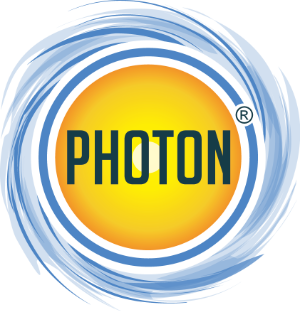PHOTON® –
stress prevention for improved plant health
PHOTON® –
reducing stress means ensuring yield.
PHOTON® – a solid, dust-free organic-mineral fertiliser
- PHOTON® serves as a primer for the prevention of environmental stress.
- PHOTON® consists of azelaic and sebacic acid and contains potassium, magnesium, and boron.
- With an applicationrate of Only 20 – 40 g/ha, PHOTON® Is universally and easily applicable.
- PHOTON® is available in 250 g / 500 g / 6 kg or 15 kg containers.
PHOTON® – many added values for plant cultivation in one product
- Very good cost-benefit ratio
- Increases the yield and/or quality of the harvest
- Effective and resistant to heat, cold, drought and other stress factors
- Ecologically harmless
- Soluble granulate formulation, easy to store and handle
- Low dosage
- Compatible with common crop protection productsSalinisation
PHOTON® – Composition
- Solid organic-mineral potassium fertiliser (PFC I (B)(I)) K 22
- 22% K2O (total potassium oxide, water-soluble)
- Organic carbon (Corg): 29%
- Dry matter 100%
- Ingredients: salts of azelaic acid and sebacic acid
- (dicarboxylic acids, CMC2 plant extracts),
- potassium salts (CMC1: substances and mixtures from unprocessed raw materials).
PHOTON® –
What are the stress factors that plants have to deal with?
Biotic Environmental Influences by Living Organisms
- Insects
- Vertebrates
- Diseases
- Weeds
Abiotic environmental influences in plant cultivation
- Temperature (heat, cold)
- Light (ultraviolet, infrared, white – low and high intensity)
- Water (drought, flooding)
- Soil composition (acidity and salt content, minerals, toxins, etc.)
Abiotic environmental Influences are interdependent:
- Too little water can cause plants to overheat
- Too much light raises the temperature and increases water consumption
- Too high or low temperatures impair photosynthesis and increase water loss from the plant and the soil
When stress increases, photosynthesis decreases!
- Photoinhibition impairs electron transport
- CO2 binding is reduced
- The chloroplasts continue to absorb light. Light energy not utilised for photosynthesis is converted into free radicals (Oˉ)
Plants use stored carbohydrates to repair damage.The lack of carbohydrates can disrupt the membrane structure. Free radicals also damage the leaf tissue!
How do plants deal with abiotic stress?
When stress reaches a critical level, photosynthesis slows down and eventually comes to a standstill. This interrupts the production of carbohydrates.
However, the lower quantities of carbohydrates are problematic:
- Smaller fruits are formed
- Fewer fruits are formed (increased fruit drop)
- There is less shoot and root growth
- Reproductive tissue develops poorly
- The number and quality of flowers stagnate/decrease in the following season
This can have a negative effect on the health and strength of the plant, the composition of the cells, the firmness of the tissue and the skin of the fruit.
Even low stress levels can negatively affect plant performance when multifactorial stress occurs. In this case, several small stress factors occur simultaneously:



